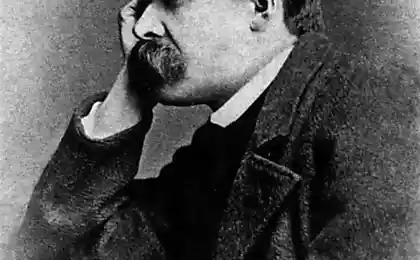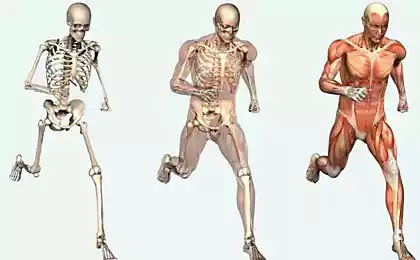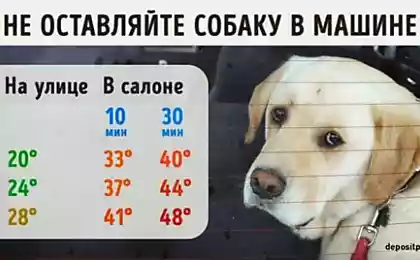112
9 Things Not to Do When It’s Too Hot Outside
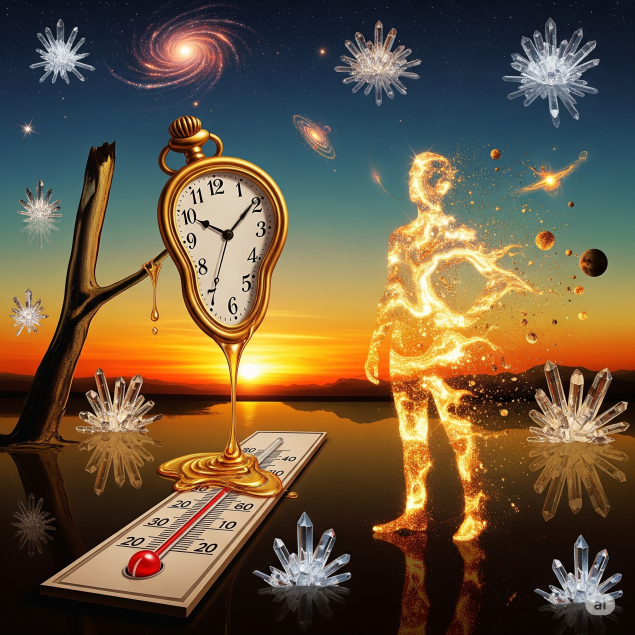
Summer heat can turn an ordinary day into a real test for the body. When the thermometer goes 30 degrees, our body turns on the emergency cooling mode, and every wrong decision can cost our health.
It's important to understand: At temperatures above 30 ° C, the cardiovascular system works at its limit. The heart begins to beat one and a half times faster, trying to pump blood to the skin for cooling. At such times, the body is particularly vulnerable.
1. Sports feats under the scorching sun
The decision to go for a run in the midst of the sun is not a manifestation of willpower, but a direct path to heat exhaustion. When the air warms to critical levels, each physical activity becomes an additional burden on the already overloaded thermoregulation system.
Studies show that at temperatures above 32°C, the effectiveness of exercise drops by 15-20%, and the risk of heat stroke triples.
Sweat isn't just water. Together with it, the body loses sodium, potassium, magnesium - elements critical for the work of muscles and the nervous system. When losses exceed the possibilities of replenishment, a cascade of unpleasant reactions begins: dizziness, nausea, confusion.
The optimal time for training: before 10:00 or after 18:00, when the sun is at a safe angle and the air temperature does not exceed 28 ° C.
2. Fashion experiments with dark shades

Physics does not forgive fashion experiments. Dark colors absorb up to 90% of the sun’s radiation, turning clothes into a personal sauna. Synthetic tissues create a greenhouse gas effect by blocking the natural ventilation of the skin.
Natural materials - cotton, linen, bamboo fiber - have a unique ability to capillary transport of moisture. They not only absorb sweat, but also contribute to its rapid evaporation, creating a natural cooling effect.
Scientific fact: White clothing reflects up to 95% of sunlight, while black absorbs almost all radiation, raising body temperature by 5-7 degrees.
3. Culinary mistakes in hot weather
Digestion is an internal boiler, which in the heat becomes an additional source of heat. Fatty, heavy food requires intensive work of the gastrointestinal tract, which leads to an increase in internal body temperature by 1-2 degrees.
The process of digesting animal proteins is accompanied by the release of large amounts of heat, a phenomenon known as the thermal effect of food. In the heat, this can be a critical factor for overall well-being.
The perfect summer diet: raw vegetables, fruits with a high water content (watermelon, cucumbers, tomatoes), dairy products, cold soups. Food should be frequent, but portions should be minimal.
4. Dangerously ignoring thirst signals
The feeling of thirst is not a request of the body, but its cry for help. When the brain sends out a thirst signal, dehydration has already begun. In hot weather, fluid loss can reach 2-3 liters per hour, and most people are not even aware of it.
Critical moment: Loss of just 2% of body weight fluid leads to a 20% decrease in physical performance. With a loss of 5%, serious violations of thermoregulation begin.
Water is not just H2O. It is a vehicle for nutrients, temperature regulator, joint lubricant and the basis of all biochemical reactions. Every cell in our body is 70% water, and even a small disturbance in the water balance affects all body systems.
5. Alcoholic illusions of coolness
A cold beer on a hot day seems like a salvation, but it's an insidious trap. Alcohol is a powerful diuretic that accelerates the removal of fluid from the body by 1.5-2 times. Moreover, ethanol disrupts the work of antidiuretic hormone, which regulates water balance.
Each gram of alcohol requires 7 milliliters of water for its metabolism. A glass of beer in the heat can result in the loss of 300-400 ml of liquid
Alcohol also dilates peripheral vessels, creating a false feeling of coolness, but at the same time disrupting the natural mechanisms of thermoregulation. The body loses its ability to adequately respond to overheating.
6. Vehicle temperature traps
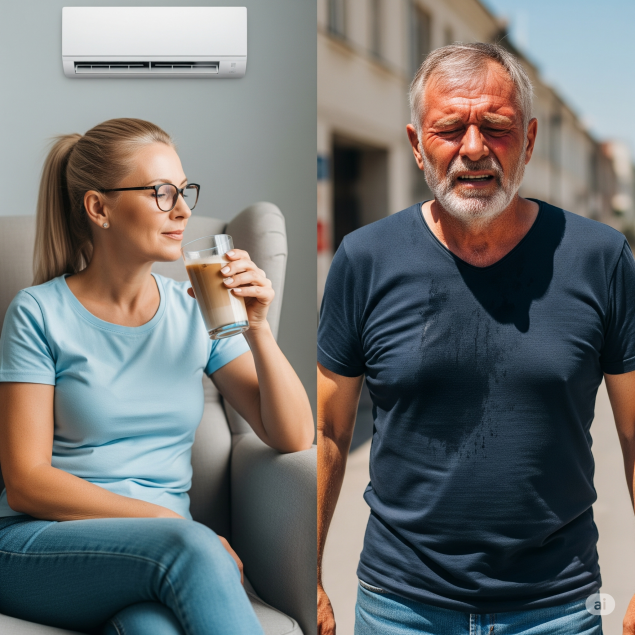
The interior of the car in the sun is a real climatic torture chamber. The temperature inside can reach 60-70 ° C, which is comparable to the conditions in the sauna. Glass creates a greenhouse effect by keeping heat inside.
The human body is not adapted to such extreme conditions. After 5 minutes in the hot cabin begins active fluid loss, increases pressure, disturbed coordination of movements. This is a direct threat to road safety.
The statistics say: Every year, more than 600 children die in cars in hot weather. The temperature in the cabin can rise by 20 degrees in just 10 minutes.
7. Solar activity during peak hours
Time from 11:00 to 17:00 is the period of maximum solar aggression. The ultraviolet index during these hours reaches critical values of 8-11 units, which means "extreme" level of danger. Every minute in the open sun increases the risk of sunstroke.
Direct sunlight heats the surface of the skin to 45-50 ° C, which exceeds the pain threshold and can cause serious burns. Asphalt and concrete accumulate heat, creating additional infrared radiation.
Safety rule: If your shadow is shorter than your height, the sun is in a dangerous zone. Avoid spending too much time outdoors at such times.
8. Temperature shock of water procedures
An ice shower after a heatwave is not refreshment, but stress for the cardiovascular system. A sharp temperature drop causes vasoconstriction - an instant constriction of blood vessels, which can lead to a jump in pressure and a violation of the heart rhythm.
The body heated to 38-39°C is not ready for instant cooling. This can cause thermal shock, dizziness, loss of consciousness. It is especially dangerous for people with cardiovascular diseases.
Physiological mechanism: Proper cooling should occur gradually, reducing the water temperature by 2-3 degrees every 2-3 minutes. This allows the vessels to adapt without stress.
9. Neglect of acclimatization
Adaptation to heat is not a one-time process, but the constant work of the body. Thermoregulation systems need to gradually “learn” new conditions. Sharp changes in the temperature regime can cause maladaptation and violation of natural defense mechanisms.
Conclusion
Hot weather is not an enemy, but a condition that requires a reasonable approach and respect for the capabilities of our body. Each of these errors may seem insignificant, but collectively, they put a critical strain on life support systems.
Remember, your body is a perfect thermoregulation system that has evolved over millions of years to deal with heat. Just don't stop her from working properly.
Glossary of terms
Heat exhaustion is a condition caused by overheating of the body, characterized by weakness, nausea, dizziness and abundant sweating.
Thermoregulation is the ability of the body to maintain a constant internal body temperature regardless of external conditions.
Capillary moisture transport is the process of moving a liquid through the smallest pores of a material under the action of capillary forces.
The thermal effect of food is an increase in the energy consumption of the body for digestion, absorption and absorption of nutrients.
Diuretic is a substance that increases the release of urine and contributes to the removal of fluid from the body.
The greenhouse effect is the phenomenon of heat retention in an enclosed space due to the passage of short-wave radiation and long-wave delay.
Vasoconstriction is the narrowing of blood vessels in response to various stimuli, leading to a decrease in blood flow.
The ultraviolet index is an international standard measure of the intensity of UV radiation from the sun that affects human skin.
The Big Problem: Why Happiness Cannot Be Achieved
Simplicity and Happiness: What Korean Philosophy Can Teach You





